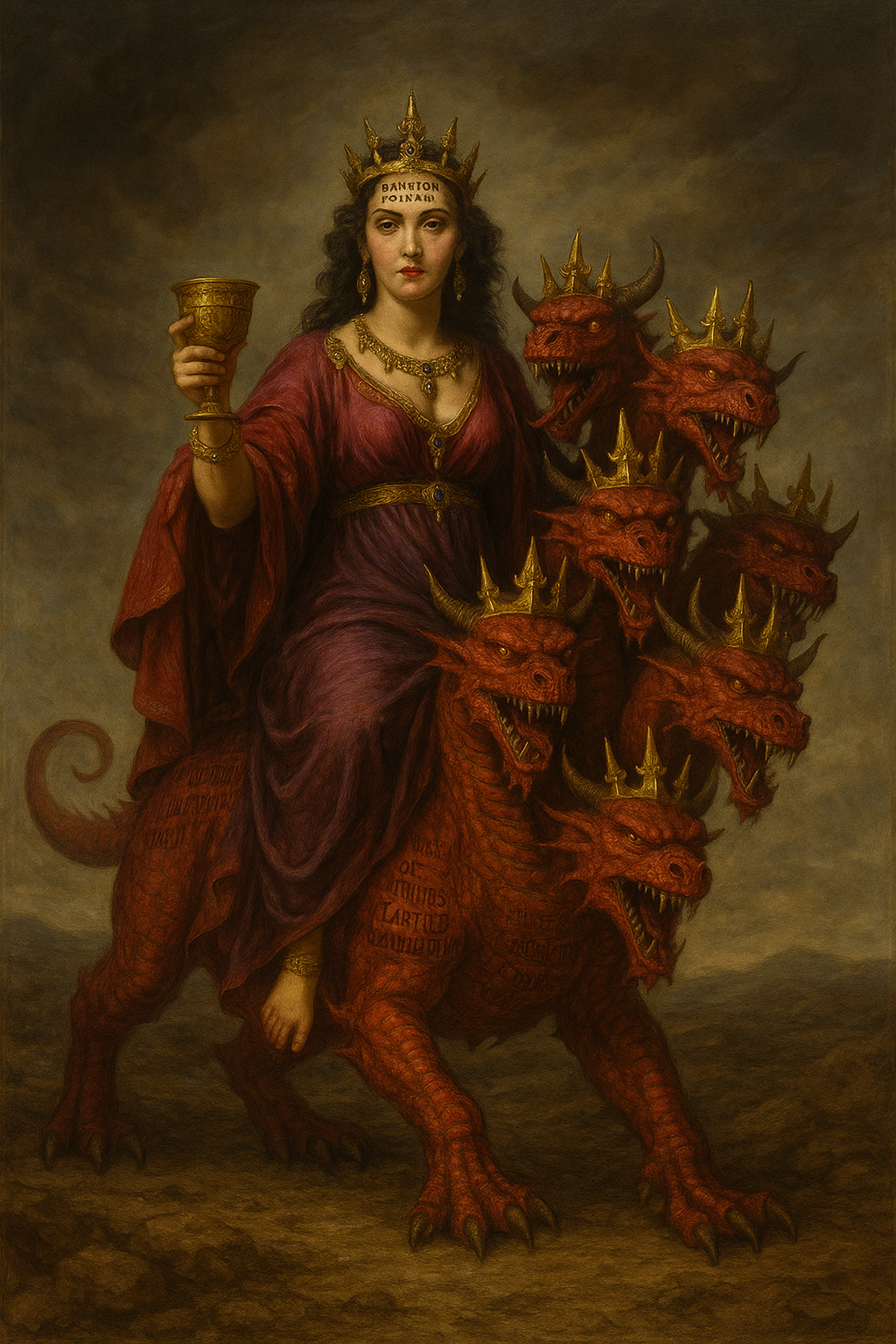Revelation’s Harlot: Unfaithful Jerusalem and the Fall of the Old Covenant
Introduction
Among the most provocative images in the book of Revelation is that of the great harlot riding the scarlet beast (Revelation 17). For centuries, interpreters have debated the identity of this woman, her relation to the beast, and the implications for Christian eschatology. While futurists often project her identity into a distant one-world religious system, preterists argue that the harlot represents first-century Jerusalem—once the covenant bride of God, now portrayed as a faithless prostitute judged for rejecting her Messiah.
The Identity of the Harlot
Revelation 17 describes “the great prostitute” who sits on many waters, arrayed in purple and scarlet, adorned with gold, jewels, and pearls, and holding a golden cup full of abominations. She rides a scarlet beast with seven heads and ten horns and is “drunk with the blood of the saints” (Rev. 17:6). The angel later identifies the woman as “the great city that has dominion over the kings of the earth” (Rev. 17:18). Futurists typically interpret the harlot as a symbol of a future religious system or Babylonian empire. But preterists note that the phrase “the great city” also appears earlier in Revelation (Rev. 11:8) to describe the place “where their Lord was crucified”—a clear reference to Jerusalem.
Jerusalem: From Covenant Bride to Harlot
Throughout the Old Testament, Israel is depicted as God’s bride (Isa. 54:5; Jer. 31:32; Hos. 2:19). But when Israel violated the covenant through idolatry and disobedience, the prophets frequently described her as a harlot or unfaithful wife (Jer. 3:6; Ezek. 16, 23; Hos. 1-3). Revelation draws on this prophetic tradition. The harlot’s appearance and actions closely mirror those of the adulterous woman in Ezekiel 16 and 23, who represents Jerusalem’s infidelity to God. The vivid imagery of wealth, immorality, and blood guilt ties the Revelation 17 figure to the apostate religious establishment of the first century.
The Fall of Jerusalem: Fulfillment of Jesus’ Prophecy
Jesus predicted the destruction of Jerusalem in His Olivet Discourse (Matt. 24; Luke 21; Mark 13). He warned that the temple would be torn down, that not one stone would remain upon another, and that terrible tribulation would come upon “this generation.” Preterists see the events of 70 AD as the fulfillment of this prophecy. The harlot’s destruction in Revelation 17–18 closely parallels the judgment Jesus pronounced against Jerusalem. Revelation 18:24 declares, “In her was found the blood of prophets and of saints,” echoing Jesus’ own words in Matthew 23:35 that Jerusalem would bear responsibility for “all the righteous blood shed on earth.”
Josephus and the Horror of 70 AD
The Jewish historian Josephus, who lived through the siege of Jerusalem, offers a harrowing description of the events leading up to and including the city’s fall. In The Wars of the Jews, he recounts how famine gripped the city, how factions of zealots destroyed supplies, and how desperate mothers resorted to cannibalism. Over one million people perished, and the temple—once the center of Jewish worship—was utterly demolished. This level of devastation matches the apocalyptic tone of Revelation 18, where the harlot’s destruction is swift, fiery, and final. The lament of the nations over her fall also reflects the shock felt by the world at the loss of a once-great city.
Dispensational Misreading: A Future One-World Government?
Modern dispensationalism claims that the harlot and the beast refer to a future global empire, possibly led by a revived Roman power and a charismatic Antichrist figure. This view anticipates a rebuilt temple, reinstituted sacrifices, and global enforcement of religious compliance. However, this interpretation detaches the text from its original historical and pastoral context. John wrote to seven real churches in Asia Minor (Rev. 1:4) under Roman persecution. The urgency and relevance of his visions would have been immediate—not futuristic. The preterist view maintains continuity with the first-century setting and offers a coherent explanation for the harlot’s role in covenant judgment.
Theological Significance: The End of the Old Covenant
If the harlot is indeed Jerusalem, then her destruction marks the end of the Old Covenant age. The temple system, priesthood, and sacrificial offerings were all rendered obsolete (Heb. 8:13; 9:8–10). The New Covenant, inaugurated by Christ’s death and resurrection, replaces the old, and the judgment of Jerusalem seals this redemptive transition. This view elevates the significance of 70 AD not merely as a historical tragedy but as a covenantal milestone. God had warned through the prophets that judgment would come for covenant infidelity. Revelation proclaims its arrival.
The Bride vs. the Harlot
It’s no accident that Revelation contrasts the harlot with the bride. While the harlot is adorned in gold and scarlet, drunk on blood, and judged by God, the bride is pure, clothed in white, and united with Christ. The bride is “the New Jerusalem,” not the old (Rev. 21:2). This theological contrast further supports the identification of the harlot as Old Covenant Jerusalem. The bride represents the faithful church—the true Israel—redeemed and purified. The harlot, by contrast, has broken the covenant and faces judgment.
Conclusion: Why This Matters
Understanding the harlot of Revelation as apostate Jerusalem transforms the book from a confusing puzzle of future events into a coherent narrative of covenantal judgment and renewal. It also calls the church to recognize the consequences of rejecting Christ and the beauty of embracing Him as King. The fall of the harlot is not the end—it is the beginning of the church’s mission to disciple the nations. In the wake of judgment, grace advances. In place of the unfaithful city, a new city descends—a people redeemed by the Lamb, ready to reign with Him forever.

Leave a Reply